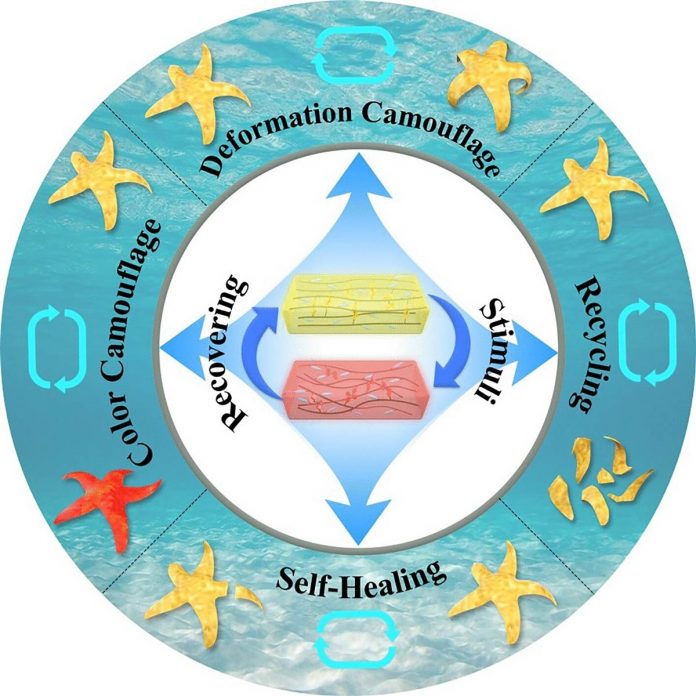Materials scientists have developed a starfish-shaped soft robot which will mimic the camouflage capabilities of marine animals. This starfish-shaped soft robot will respond to heat and pressure by changing its movement and colour. The material of these soft robots can be fully recycled. They have published in the journal Angewandte Chemie.
Octopuses and starfish can change their colour and shape to match the background. Southeast University research Quan Li and his team made a soft robot which will mimic this trait. They have preferred liquid crystal elastomer as this material changes phases at different temperatures. The liquid crystal molecules of the elastomer loosen itself when heated.
The process of the making
Scientists have used this shrinking effect which has enabled the soft robot to “crawl.” They first molded the polymer material as a starfish. Then they added infrared-sensitive dye to the underside. This has worked as a site contractor. They have heated up the material by using photothermal effect. This caused near-infrared irradiation in the material. The material expanded when it cooled down. Then the starfish robot moved to the surface. It has expanded like a caterpillar.
The new soft robot can also change colour. Scientists also applied a cross-linker in the soft robot. They have used dynamic covalent cross-linking system. Its molecular parts were separated when it was heated up. The yellow molecule also turned red.
The new robot also has self-healing techniques. The researchers have cut off a tentacle to test it and the robot healed quickly after heating up. The scientists also cut the whole robot into pieces. It has moulded itself into starfish shape after heating up. The scientists have gained a new soft robot.
The scientists said, cross-linking dye molecule and tetraarylsuccinonitrile have a vital role to play in this multiple adaptation capability. These can perform several functions simultaneously. These provided dynamic covalent bonding. The scientists think these soft materials can be used in biomimetic robots and sensors.

